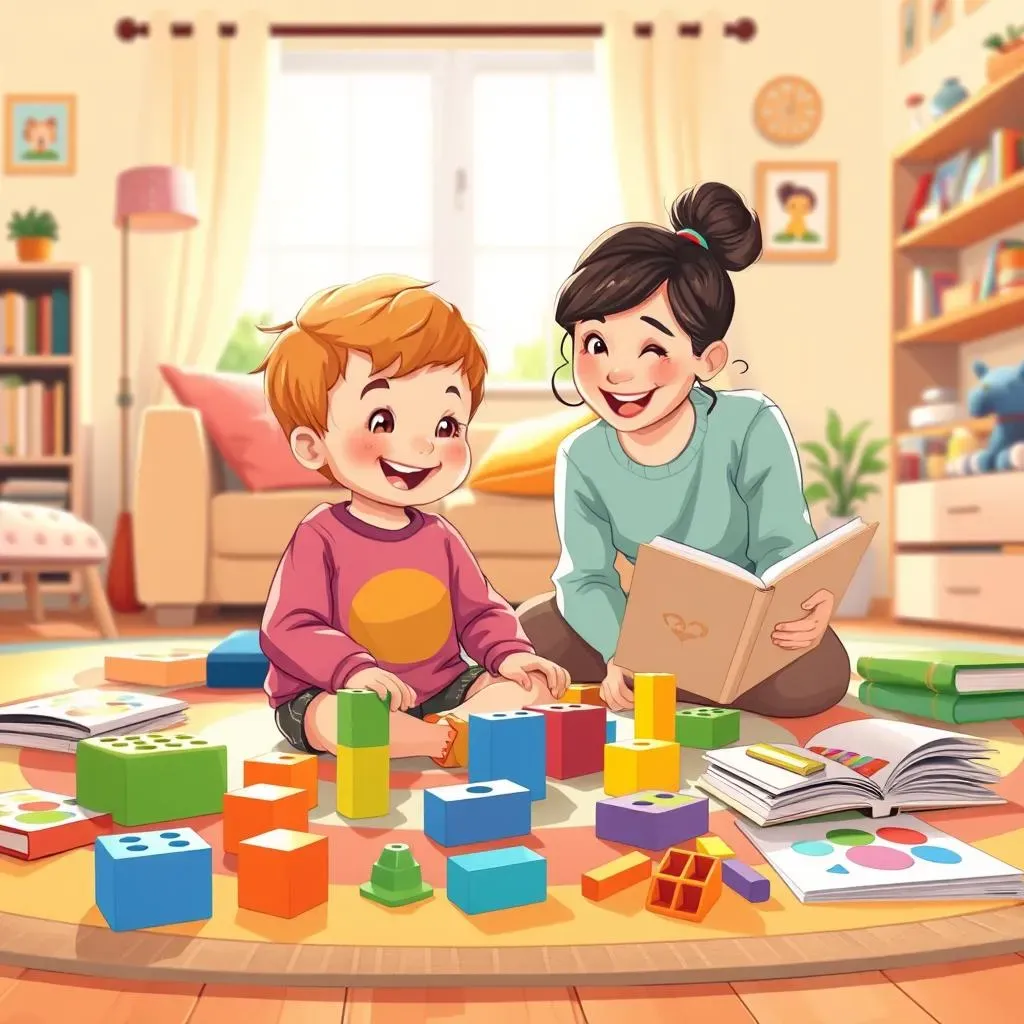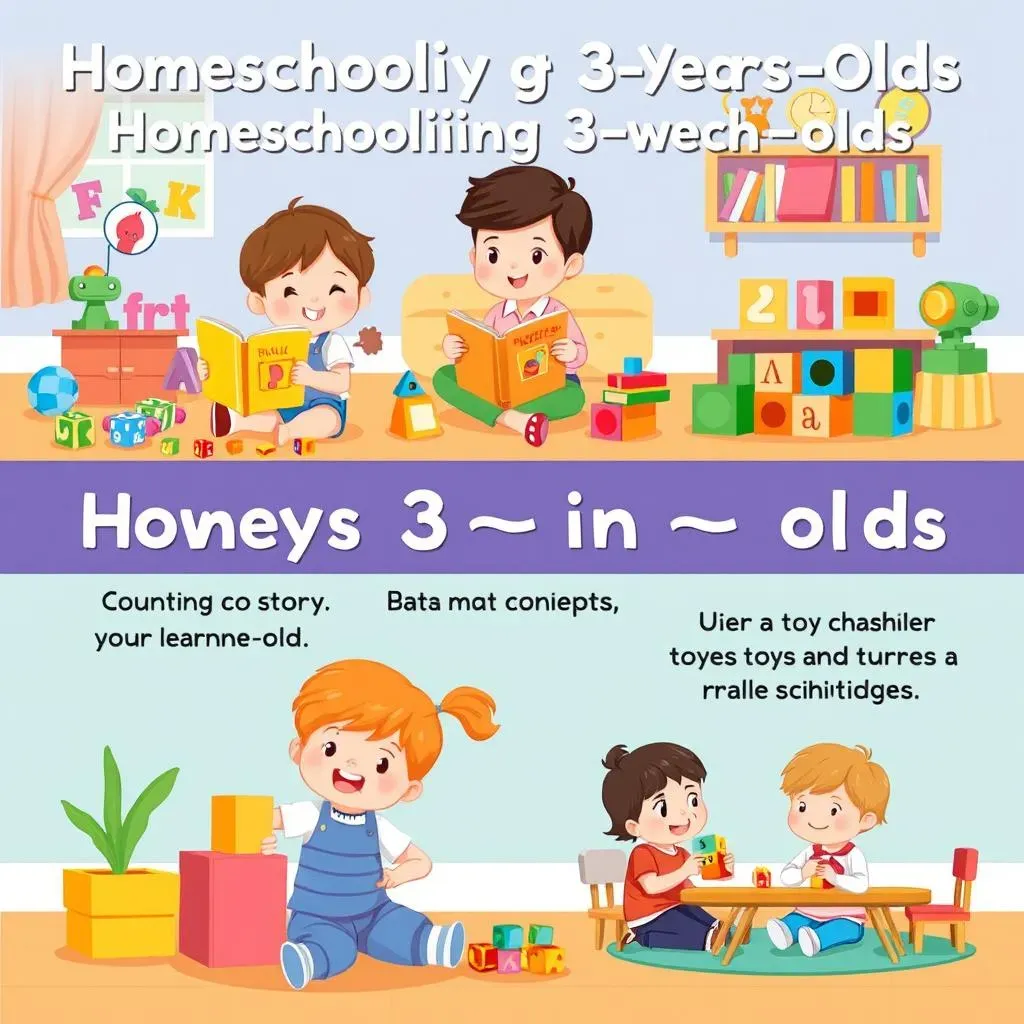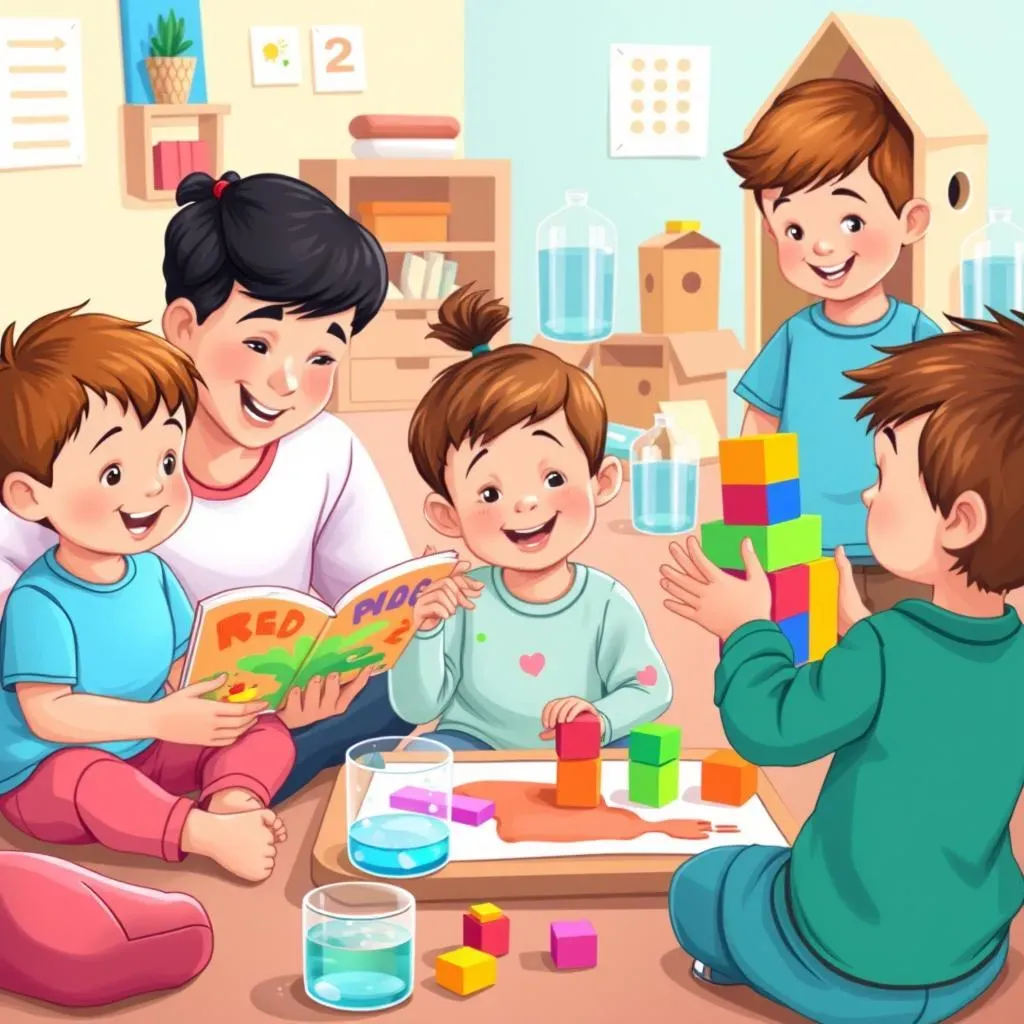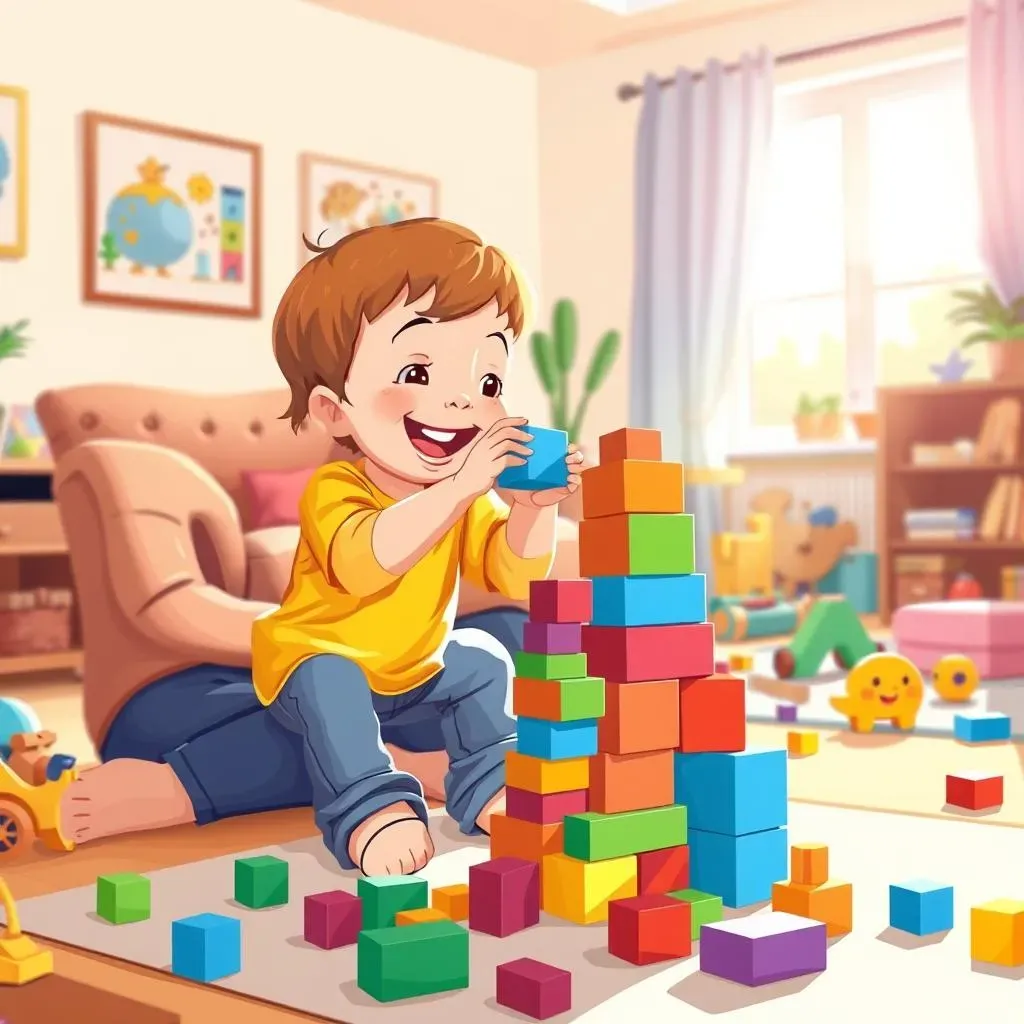Table of Contents
Thinking about homeschooling for 3 year olds? It might seem like a big step, but it doesn't have to be complicated. Forget about strict schedules and endless worksheets. This is all about sparking curiosity and making learning a joyful adventure. We're not aiming for mini-geniuses here, just happy, engaged kids who are excited to explore the world around them. This article will show you how to keep things simple, focusing on fun and play. We’ll cover the key areas to focus on, like early literacy, basic math, and social skills, all tailored for little ones. You’ll discover some great resources and activity ideas that fit right into your day. We'll also talk about why flexibility is your best friend and how everyday experiences can be powerful learning moments. So, if you're ready to ditch the overwhelm and embrace the fun side of homeschooling for 3 year olds, let’s get started!
Keeping Homeschooling Fun and Easy for 3 Year Olds
Keeping Homeschooling Fun and Easy for 3 Year Olds
so you're thinking about homeschooling a three-year-old? First off, breathe. This isn’t about recreating a classroom at home. It’s about making learning a natural part of their day. Think of it less like "school" and more like "guided play." Three-year-olds aren't wired for long lessons. They learn best by doing, exploring, and asking a million questions. The key is to keep things light, engaging, and short. We're talking activities that last maybe 10-15 minutes at a time, not hour-long lectures. If it feels like a chore for either of you, it’s time to switch gears. The best part? You get to see the world through their eyes again, and that’s pretty cool.
Key Learning Areas for Homeschooling 3 Year Olds
Key Learning Areas for Homeschooling 3 Year Olds
Early Literacy: More Than Just ABCs
when we say "literacy," don't picture a three-year-old writing essays. It's way more basic than that. We're talking about getting them comfy with language. This means talking to them a lot, reading aloud every day, and pointing out words in books and around the house. It's about building a love for stories and sounds. Don't stress about them knowing all the letters just yet. Focus on the fun parts: rhyming, singing silly songs, and making up your own stories. It’s all about building a foundation, not a finished product.
Think of it like planting seeds. You're not expecting a full-grown tree overnight, but you're giving them the basics they need to grow. It's about exposure and engagement, not memorization. Remember that time my kid tried to "read" a cereal box? Yeah, that’s the kind of interaction we're aiming for. Even if they're making up the words, they're still engaging with print and that's a win.
Basic Math: Counting Beyond Your Fingers
Math for three-year-olds? It's not about algebra, thankfully. It's about the simple stuff: counting, sorting, and recognizing shapes. Count the blocks as you build a tower. Sort toys by color or size. Point out squares and circles in the world around you. These little things make a big difference. It's about turning everyday moments into math lessons, and they won't even know they're "learning."
I like to use snacks for this. "Can you give me three grapes? How many do you have left?" It's a sneaky way to get them thinking about numbers. And hey, who doesn't love a snack break? The key is to make it hands-on and relatable. You can also use music, like songs that count objects, to make it more fun and memorable. These little things add up to a big boost in their mathematical thinking.
Learning Area | Focus | Example Activities |
|---|---|---|
Early Literacy | Language and sounds | Read aloud, sing songs, make up stories |
Basic Math | Numbers, shapes, sorting | Count blocks, sort toys, identify shapes |
Social Skills | Sharing, taking turns | Playdates, group games |
Social Skills: Learning to Share (Sometimes)
Social skills are a big deal. Three-year-olds are starting to navigate the world of sharing, taking turns, and playing with others. This is a great time to set up playdates, or even just have them interact with siblings. It's all about learning how to communicate, cooperate, and handle those inevitable toddler meltdowns. Don't expect perfection, though. Sharing is a tough concept, even for some adults. But by creating opportunities for interaction, you're helping them build crucial social skills that will benefit them later in life.
Remember, it's not about forcing them to be the most sociable kid on the block. It’s about giving them the tools to interact with others in a positive way. And, let’s be honest, sometimes just surviving a playdate without a major meltdown is a win. It’s about progress, not perfection. So, embrace the chaos and celebrate the small victories.
Resources and Activities for Homeschooling 3 Year Olds
Resources and Activities for Homeschooling 3 Year Olds
Books, Books, and More Books
let's talk resources. First up, books! Picture books, board books, any kind of book. Reading aloud is like the superhero of early learning. It builds vocabulary, sparks imagination, and creates a cozy bonding experience. Don't worry about sticking to "educational" books all the time. Let your three-year-old pick out the ones with the funny pictures or silly stories. It’s about fostering a love for reading, and that starts with enjoyment. We're not trying to create little bookworms overnight, just kids who think reading is a blast.
Remember, repetition is key at this age. They might want to hear the same story over and over again, and that's totally fine. They're picking up new things each time. And don't be afraid to get dramatic with your reading! Use funny voices, act out the scenes, and make it an interactive experience. This isn't just about reading words; it's about creating a magical world together. You'll be surprised how much they absorb, even when they seem more interested in turning the pages than listening to the story.
Crafts and Hands-on Fun
Next up, let’s get crafty! Three-year-olds thrive on hands-on activities. Think playdough, finger painting, and building blocks. These aren't just fun pastimes; they help with fine motor skills, creativity, and problem-solving. Don't overthink it, either. It can be as simple as letting them squish playdough or draw with crayons. The goal is to let them explore and create without too many rules. It's about the process, not the product. I remember one time my kid decided to paint himself blue, it was messy but he was so proud of his “art” and that is what matters.
You can also do simple science experiments, like mixing colors or seeing what floats in water. These activities don't need to be complex, just engaging. Use everyday items from around the house. Cardboard boxes can become castles, and empty paper towel rolls can become telescopes. It’s about using your imagination and theirs. And remember, it’s okay if it's messy. In fact, the messier, the better. Just be sure to have some wipes handy!
Activity Type | Focus | Example |
|---|---|---|
Reading | Language and Imagination | Picture books, storytelling |
Crafts | Fine motor skills, creativity | Playdough, finger painting |
Sensory Play | Exploration, senses | Water play, sand play, texture bins |
Everyday Adventures as Learning Experiences
Don't forget that everyday life is full of learning opportunities. A walk in the park can become a nature lesson. Baking cookies can teach about measuring and following instructions. Even a trip to the grocery store is a chance to learn about different foods and colors. The world is your classroom. The trick is to be present and point out these opportunities as they arise. Ask questions, encourage them to explore, and make it an adventure. You don't need fancy lesson plans when everyday life is so rich with learning potential.
I've found that kids learn best when they're engaged and interested. So, if they are fascinated by bugs, go on a bug hunt! If they love cars, build a car ramp out of cardboard. Follow their interests and turn them into learning activities. It makes homeschooling not only effective but also fun for both of you. It's about seeing the world through their eyes and finding the magic in the mundane. Remember, these aren't just activities; they're building blocks for a lifetime of learning.
Making Homeschooling Work: Flexibility and Play for 3 Year Olds
Making Homeschooling Work: Flexibility and Play for 3 Year Olds
Embrace the Chaos: Flexibility is Key
let's get real. Homeschooling a three-year-old isn't about sticking to a rigid schedule. It's more like a dance – sometimes you lead, sometimes they do, and sometimes you just trip over your own feet. The key is to be flexible. If your plan for the day goes sideways because your little one is suddenly obsessed with stacking blocks, go with it! This isn't about forcing them into a box; it's about following their lead and making learning an adventure. Some days, you might get through all your planned activities; other days, you might just spend time exploring the backyard. And you know what? That's totally fine.
I've learned that the best "lessons" often happen when I least expect them. Like the time my kid decided to have a "mud party" in the garden. It wasn't in my lesson plan, but it turned into a great sensory experience, plus we talked about textures, colors, and even a little bit about where mud comes from. It's about seeing the learning opportunities in the everyday moments and not getting too hung up on the agenda. Remember, this isn't a race. It's about creating a positive learning environment that sparks curiosity and builds confidence.
Playtime is Learning Time
Let's talk about play. It's not just something three-year-olds do to pass the time; it's how they learn. Play is their work. So, ditch the guilt if your "school day" looks more like a playdate than a classroom. Building blocks, dress-up, pretend play, all these activities are teaching valuable skills. They're developing problem-solving abilities, creativity, and social skills. Don't underestimate the power of a good game of "house" or a spontaneous dance party. These moments are just as important as any formal lesson. In fact, they're often more effective because kids are naturally engaged and having fun.
I like to think of myself as a "play facilitator" rather than a teacher. I set up the environment, provide some materials, and then let them explore. I might ask questions to guide their thinking, but mostly I just observe and enjoy their creativity. It’s about creating a space where they feel safe to experiment, make mistakes, and learn at their own pace. And let's face it, joining in on the fun is a pretty great perk of homeschooling. So, embrace the chaos, get down on the floor, and play! It’s the best kind of learning there is.
Flexibility Point | Why It Matters | Example |
|---|---|---|
Follow the Child's Lead | Engages their curiosity | If they're into blocks, build with them! |
Embrace Spontaneity | Unplanned learning is valuable | Mud party in the garden |
See Play as Learning | Develops key skills | Dress-up, pretend play |
Wrapping Up Homeschooling for 3 Year Olds
Homeschooling for 3 year olds is truly about the journey, not the destination. It's about fostering a love of learning through everyday experiences. Remember, there is no one-size-fits-all approach. What works for one child might not work for another, and that's perfectly okay. Embrace the flexibility, cherish the play, and allow your little one to lead the way. The most important thing is that you're creating a supportive and engaging environment where learning feels like a natural part of life. So, go ahead, enjoy this special time, and watch your child blossom. You've got this!